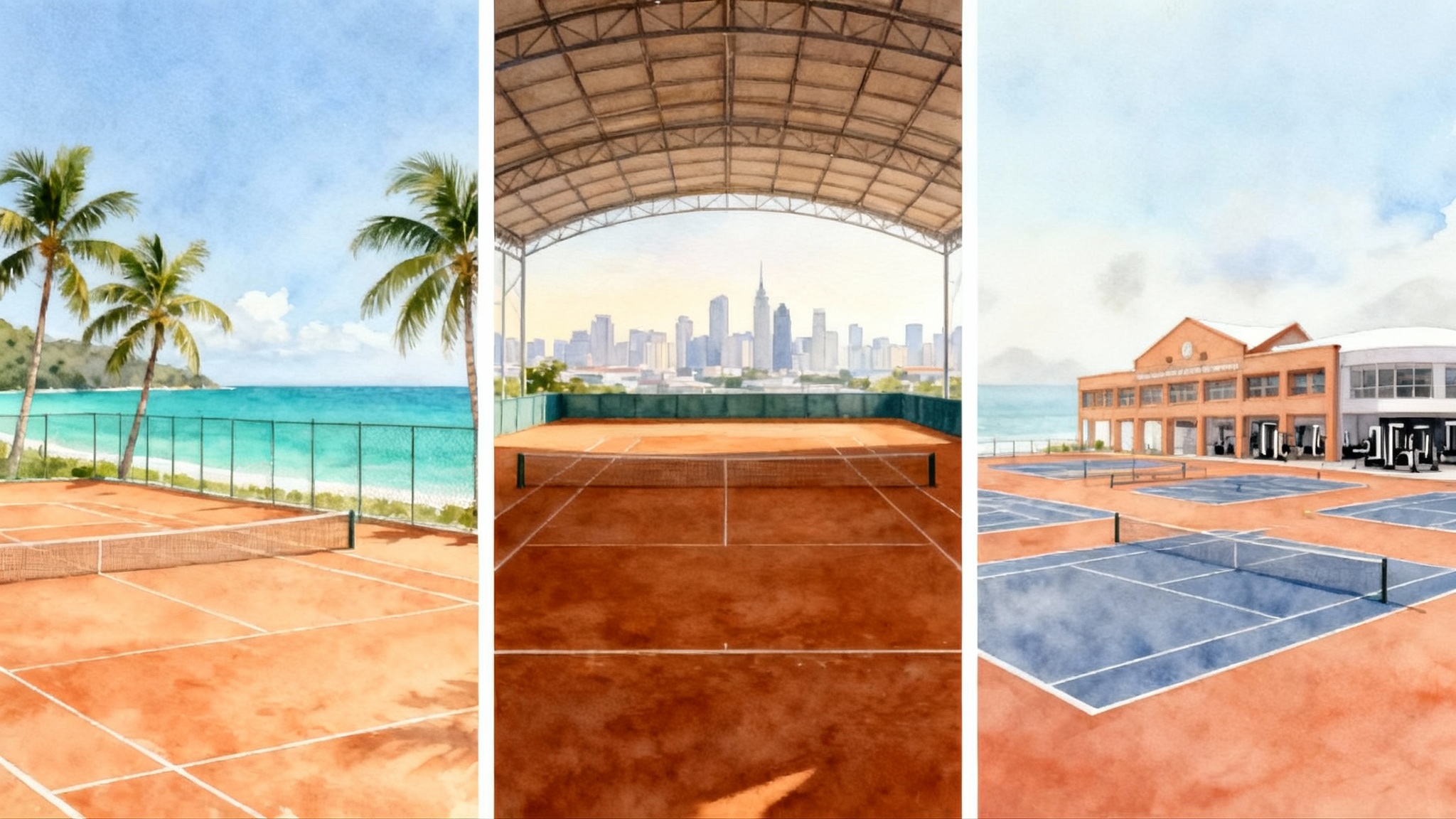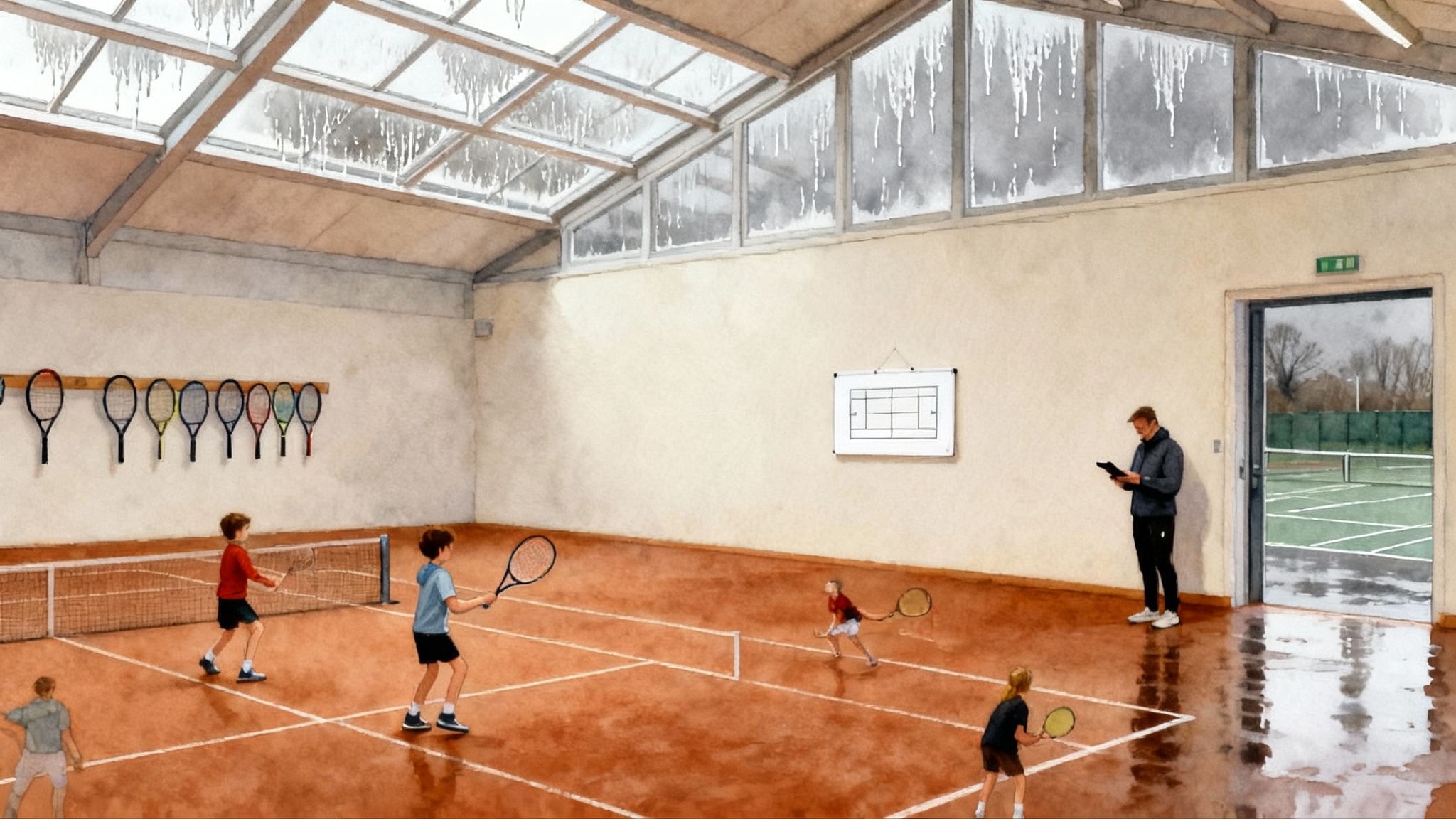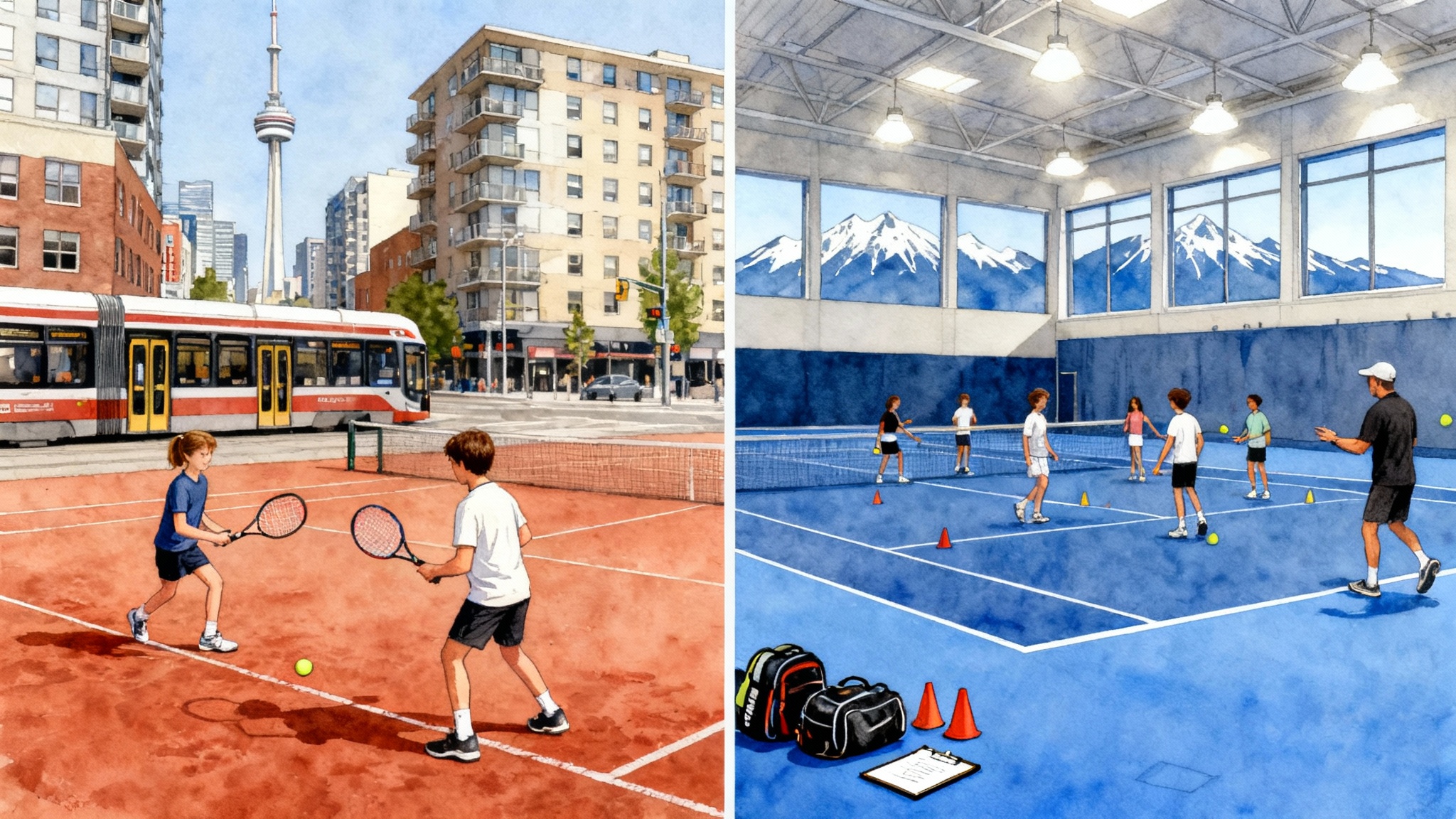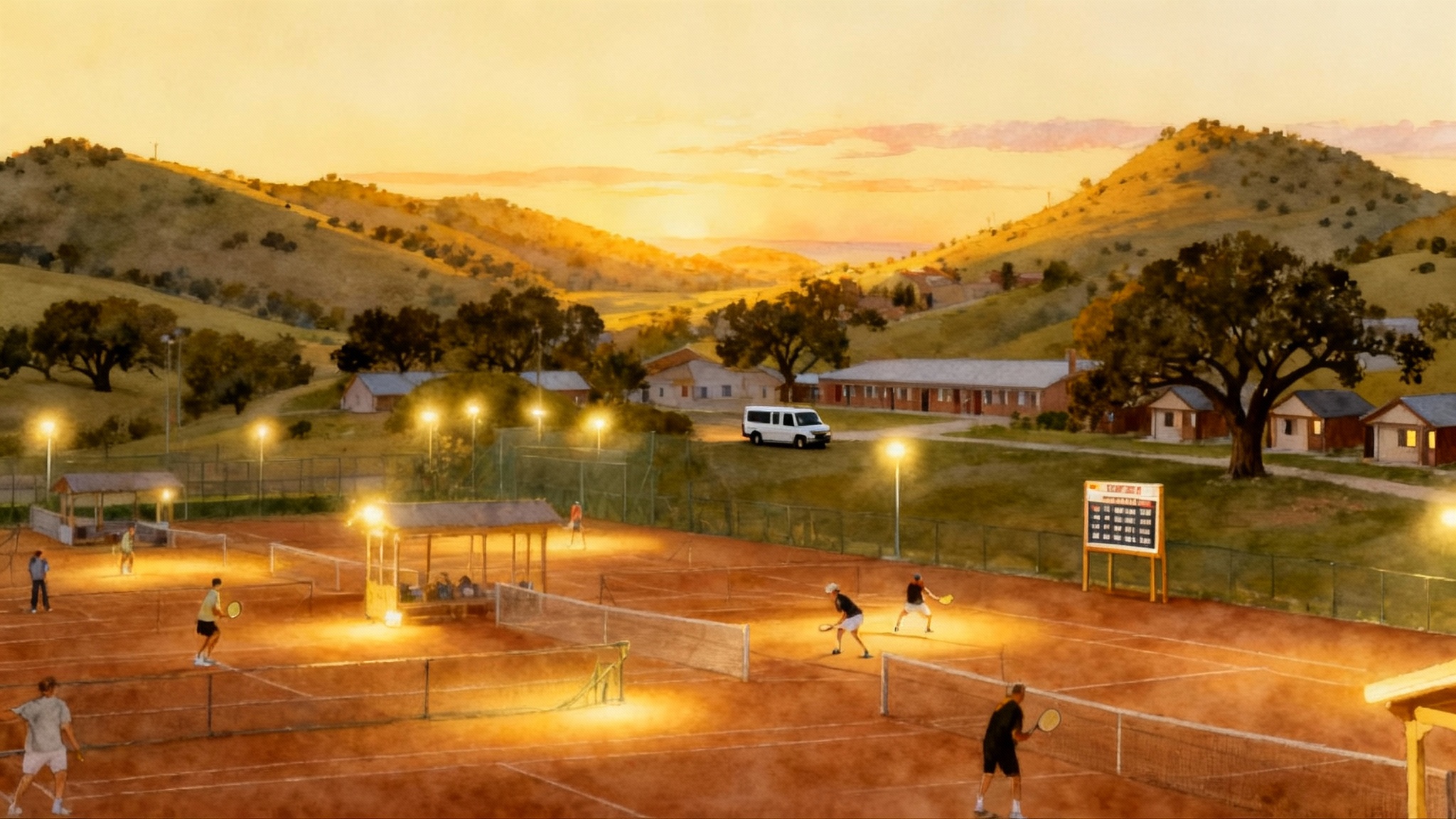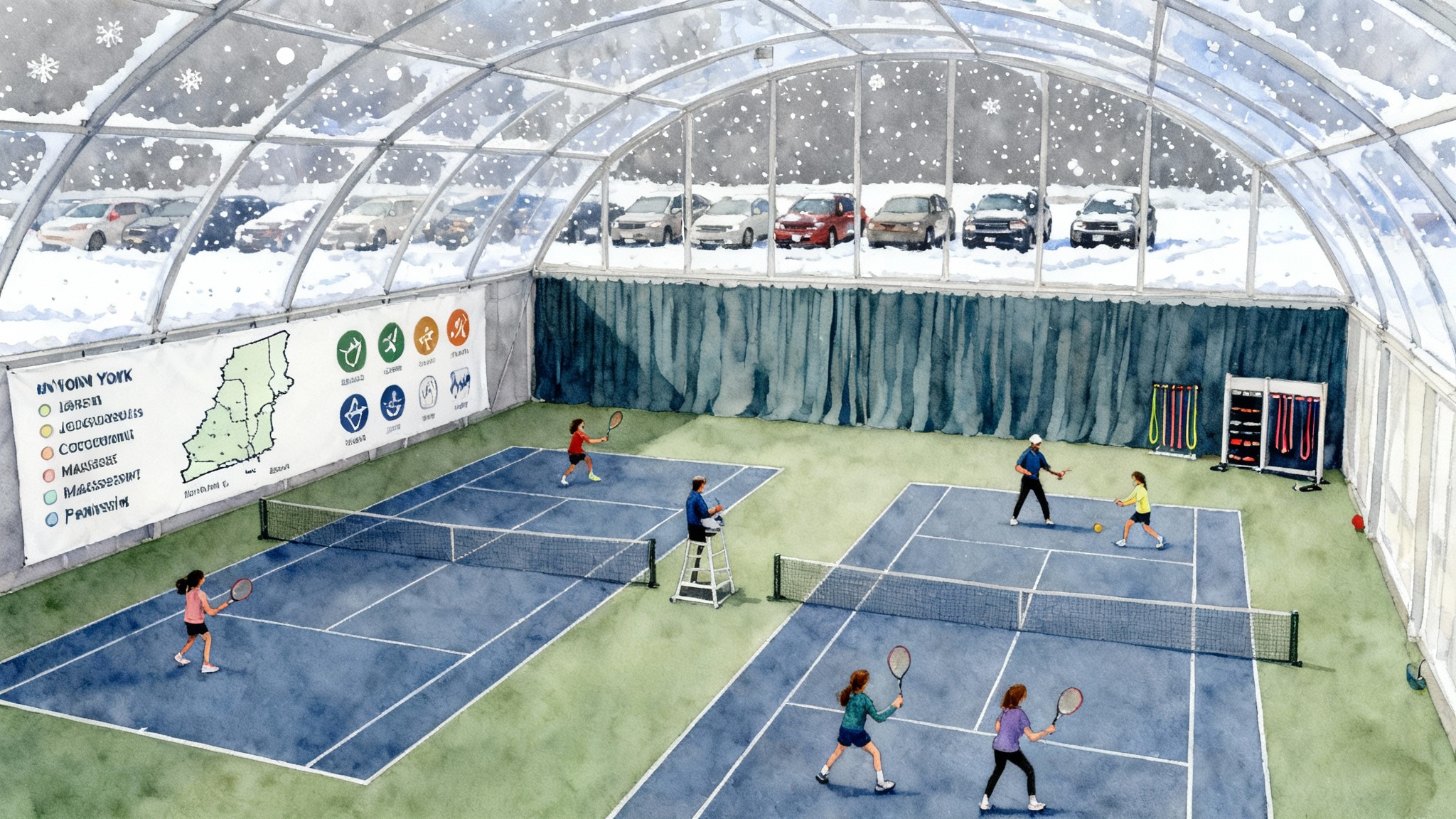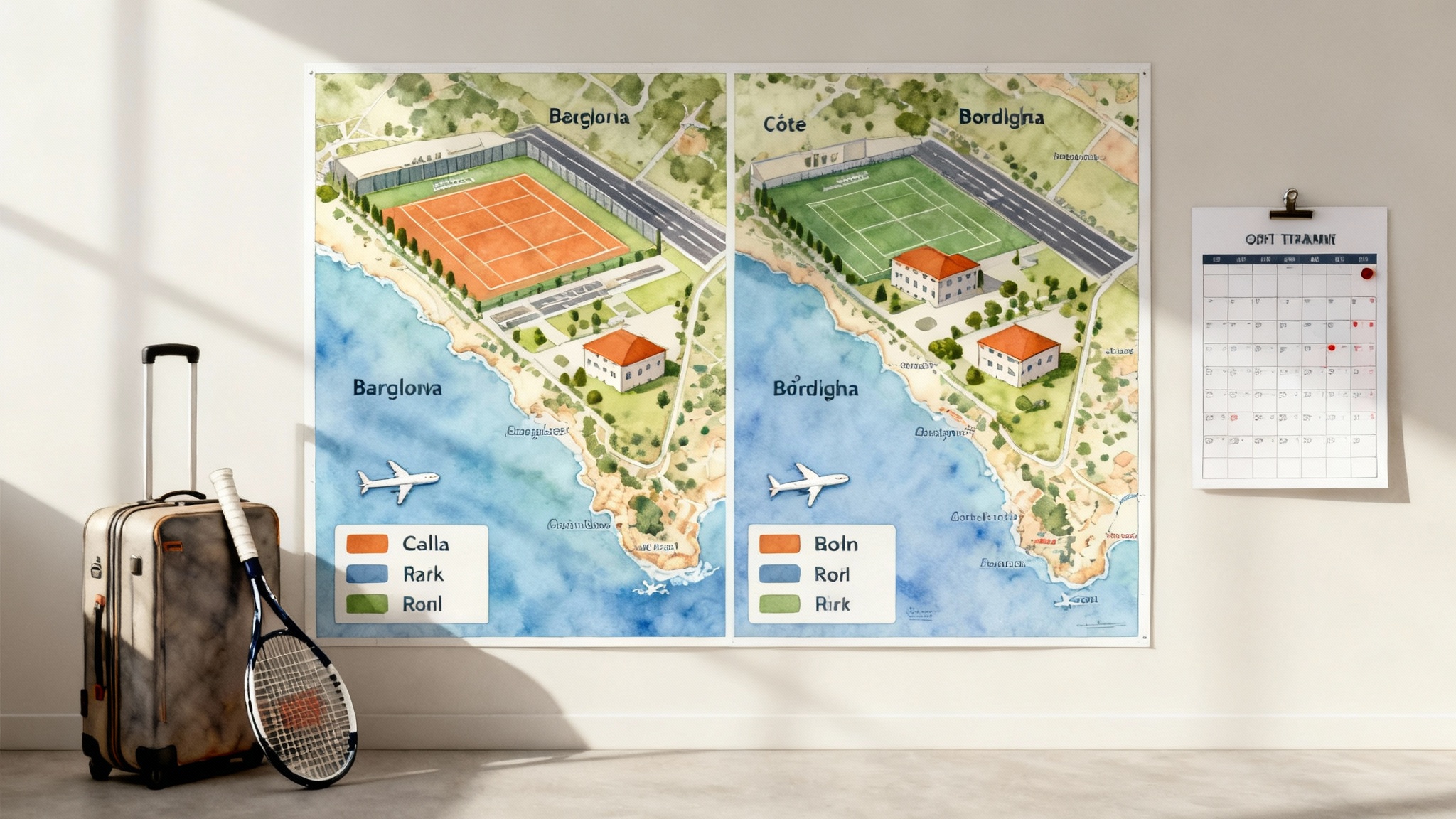Best Junior Tennis Academies 2025–26: Philly, NJ, Long Island
A parent-first comparison of the best live-at-home high-performance tennis options within a weekend drive of Philadelphia, New Jersey, and Long Island. See coaching ratios, surfaces, training loads, costs, commute tips, and a 90-day transition plan.
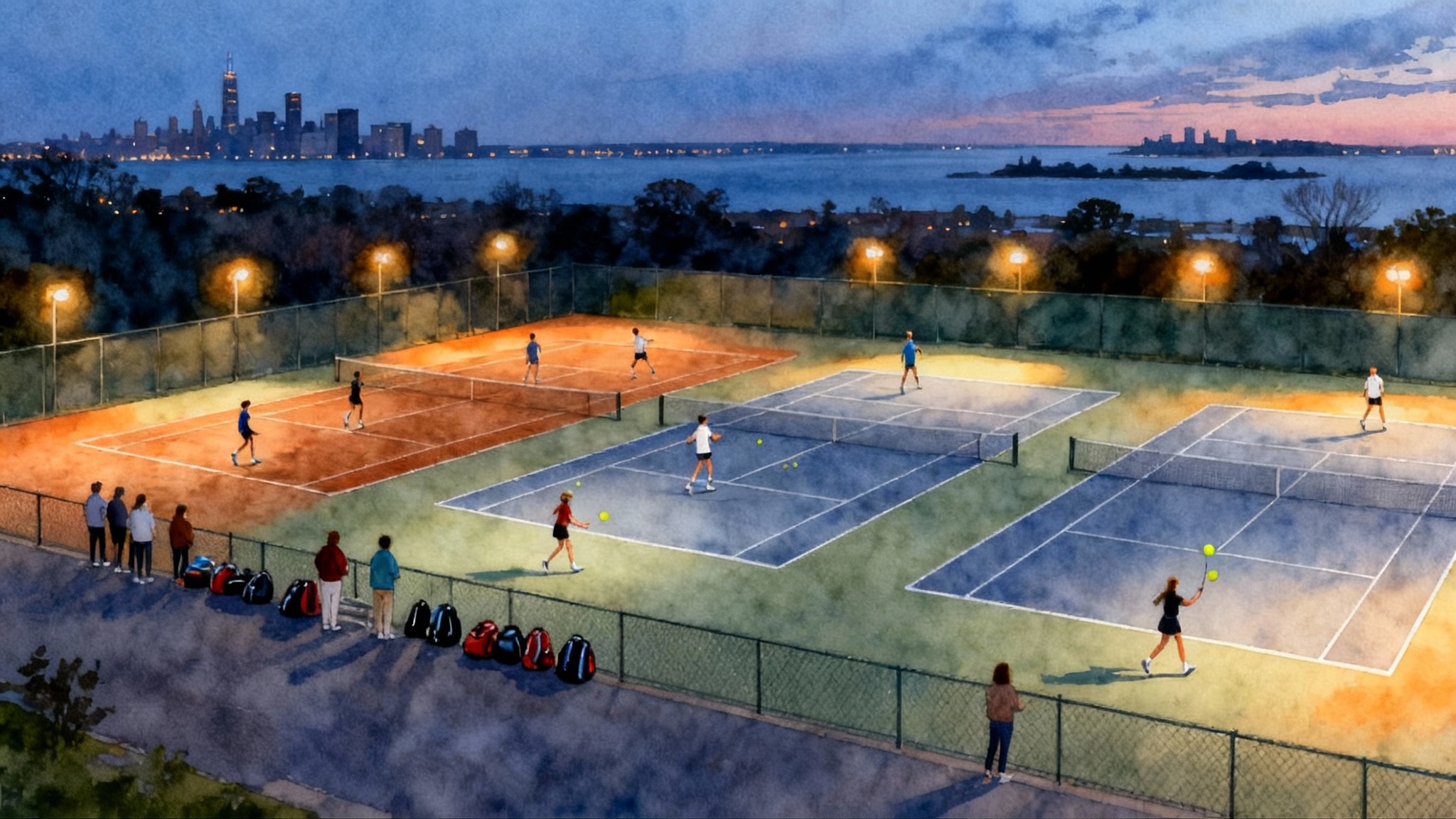
How to use this guide
You want a high-performance program your junior can attend while sleeping in their own bed. You also want clarity on training quality, time commitment, tournament pathways, and what the annual bill might look like. This guide compares the strongest live-at-home options within a weekend drive of Philadelphia, New Jersey, and Long Island. We benchmark nine practical factors parents ask about the most, then finish with seasonal scheduling tips, budget tiers, a simple drive-time map, and a 90‑day transition plan for families moving from clinic play to tournament tennis.
Before we get into choices, two terms you will see a lot:
- Universal Tennis Rating, or UTR: a rating that tracks level across ages and genders. College coaches and many academies use Verified UTR to group players and seed matches. If UTR is new for your family, read this concise explainer on Verified UTR vs UTR rating.
- International Tennis Federation, or ITF: the world body that sanctions junior events which sit above sectional and national tournaments. You do not need ITF right away, but strong regional academies make it easier to step into those events once ready.
The short list
We focus on three anchors many Mid‑Atlantic families weigh first, then add top New Jersey and Maryland options for a complete picture.
-
Philadelphia area
- Tennis Match Academy Ambler, Ambler, Pennsylvania
- High Performance Tennis Academy Bala Cynwyd, Bala Cynwyd, Pennsylvania
-
Long Island, New York
-
Northern and Central New Jersey
- CourtSense High Performance, Bogota and Tenafly
- Centercourt Performance Pathway, multiple sites including Chatham, Florham Park, Marlboro
-
Maryland and D.C. suburbs
- Junior Tennis Champions Center (JTCC), College Park
Each of these programs runs strong after‑school training blocks, weekend team play or match days, and a summer build when school is out.
The comparison matrix, in plain English
Every program publishes sessions and schedules a little differently. The summary below uses typical ranges you should expect to hear when you call each academy. Use it to shortlist, then verify the specifics during your trial.
| Academy | Surfaces you can access | Typical coaching ratio in performance pods | Weekly training load after school | Academic and day‑school fit | UTR and ITF access | College placement track | Annual cost band for local commuters | Tryout or trial process |
|---|---|---|---|---|---|---|---|---|
| Tennis Match Academy, Ambler, PA | Indoor hard plus seasonal outdoor clay options; year‑round mix | 3:1 to 4:1 in high‑performance pods; larger for fitness | 6 to 12 on‑court hours, plus optional fitness 2 to 3 hours | Live‑at‑home. School‑friendly late‑afternoon blocks; families handle academics | USTA Middle States events are close; Eastern and Mid‑Atlantic are drivable. ITF possible once UTR supports | Consistent placements to Division 1, 2, and 3 from the region; ask for the current list | Typical regional pricing: part‑time seasonal blocks plus privates and travel. Plan mid four figures to low five figures depending on days per week | Short evaluation hit. Coach places athlete in the right pod; expect movement based on level |
| High Performance Tennis Academy, Bala Cynwyd, PA | Primarily indoor hard during school year, with country club or campus access for outdoor blocks in spring and summer | 3:1 to 4:1 for top pods; 4:1 to 6:1 for large clinics | 6 to 14 on‑court hours depending on pod and weekend match play | Live‑at‑home. Multiple Bala Cynwyd and Main Line sites ease pickup windows | USTA Middle States schedule is nearby; many peer‑level match days by UTR | Deep college‑recruiting support. Ask for placement outcomes by class and by UTR band | Similar to Ambler for clinic blocks. Privates, stringing, and tournament travel drive variance | On‑court evaluation, then a provisional week in a target pod before a full session |
| SPORTIME Port Washington / JMTA, Long Island, NY | Extensive indoor capacity with both hard and clay; modernized facility and year‑round programming | 4:1 in most academy groups, smaller in invite pods | 8 to 12 on‑court hours weekdays plus weekend match play; fitness integrated | Live‑at‑home for Nassau and Queens. Structured after‑school blocks. Consider LIRR commute if in city | USTA Eastern schedule on your doorstep. Strong inter‑academy match variety. ITF New York metro events are reachable | Long track record of D1 and D3 placements. Request a placements sheet and staff references | Expect a premium Long Island rate for academy blocks; part‑time still feasible for commuters | Coach evaluation, video review if coming from out of area, then a trial block |
| CourtSense, Bogota and Tenafly, NJ | Year‑round indoor hard with access to outdoor clay and hard in season | Published 3:1 for high‑performance camps; small pods in year‑round HP groups | 8 to 14 on‑court hours across weekdays and weekends; fitness and mental skills integrated | Live‑at‑home for Bergen and surrounding counties. Late‑afternoon starts | USTA Eastern schedule plus frequent in‑house verified match play by UTR | Many college placements from North Jersey cohorts. Ask for the last 3 graduating classes | Premium for HP pods; savings if you commit to full 36‑week blocks. Travel adds | Evaluation required. Expect pod placement tied closely to Verified UTR |
| Centercourt Performance Pathway, NJ multi‑site | Indoor hard, outdoor clay and hard depending on location | 4:1 typical in performance groups; pods by UTR | 6 to 12 on‑court hours with optional weekend match play | Live‑at‑home with many site choices for carpooling | Year‑round UTR and USTA activity across sites | College placement varies by site. Ask for site‑specific outcomes | Wide band. Multi‑site membership can offset court fees | On‑court assessment and UTR review before pod assignment |
| JTCC, College Park, MD | Large indoor and outdoor complex with hard and clay; integrated performance center | Small‑group training common; 4:1 typical in pods; targeted one‑to‑one when needed | 8 to 16 hours for after‑school performance, more in summer | Live‑at‑home for DMV. School coordination experience for serious track | USTA Mid‑Atlantic schedule local; frequent verified match play. ITF step‑ups supported when ready | Nationally known placements, including top programs. Ask for the placements list by class | Premium for performance tracks. Nonprofit scholarships exist; ask early | Evaluation and short trial. Fitness and mindset screen are part of intake |
Notes for parents:
- Ratios shrink for tactical or serve pods and expand for fitness. Ask for the written ratio policy and how it is enforced when athletes are absent.
- Weekly loads rise in summer. Most programs increase on‑court minutes and add midday fitness once school ends.
- College placements are best read by class, not as a single headline. Request the last three years of outcomes with UTR bands.
Quick drive‑time map you can picture
Think of a triangle anchored by Center City Philadelphia, northern Bergen County in New Jersey, and Port Washington on Long Island. All the programs above sit inside that triangle. Use these conservative, school‑day estimates to plan your test week. Your results will vary with weather and construction.
- Center City Philadelphia to Ambler: 30 to 50 minutes by car, longer in bad weather
- Center City Philadelphia to Bala Cynwyd: 20 to 35 minutes by car
- Princeton to North Jersey sites in Tenafly or Bogota: 60 to 90 minutes by car depending on route
- George Washington Bridge to Tenafly or Bogota: 15 to 30 minutes by car
- Garden City to Port Washington: 20 to 35 minutes by car
- Queens to Port Washington by Long Island Rail Road plus car: 45 to 70 minutes end to end
Action step: Block these windows on your calendar for two weeks and attempt the commute in real time once before you commit to a session.
Seasonal scheduling tips that save sanity
- Winter bubble season: Indoor court demand peaks from November through March. Add a 10 to 15 minute buffer to weekday pickups. Book privates early and lock a consistent strength slot to avoid waitlists.
- Spring swing: As school teams start, academy pods get lighter on match play. Ask for inter‑academy duals or verified match nights to keep competitive reps.
- Summer build: Most programs open expanded daytime blocks with fitness and match play. Use this to add a third or fourth contact day, then taper before August tournaments.
- Holiday windows: Three useful tournament windows show up every year, usually around Presidents Day week in February, late June after school ends, and the late December holiday weeks. Mark those now.
- Weather flex: Clay is great for volume and movement skills, but plan a hard‑court session every week if your goal is college tennis. Most college dual matches are on hard courts.
For a sectional tournament view that helps you sketch a first calendar, scan the USTA Middle States page for upcoming junior competition dates and levels.
Budget tiers and how the money actually flows
You can steer cost with two levers: how many academy days you choose and how you bundle privates, fitness, and travel. Use this tiered map to forecast a year. Numbers below are realistic ranges parents in the Mid‑Atlantic report for live‑at‑home pathways. Always request current rate sheets and package discounts.
- Starter performance, 1 to 2 academy days per week: 6,000 to 10,000 dollars per year. This usually covers two after‑school blocks in fall and winter, one in spring, and a lighter summer. Add 1 to 2 privates per month. Tournament travel is local only.
- Competitive performance, 3 academy days plus regular match play: 10,000 to 18,000 dollars per year. Add weekly or biweekly privates, basic strength sessions, stringing, and 8 to 12 local or sectional tournaments.
- Ambitious regional, 4 days plus fitness and selective travel: 18,000 to 35,000 dollars per year. You will do multiple academy days, weekly private work, performance training, and several overnight events in Eastern, Middle States, New England, or Mid‑Atlantic.
Ways to save without losing quality:
- Commit to a full session or a 36‑week contract to secure a lower per‑hour rate.
- Carpool on heavy days and rotate who covers the extra private that week.
- String smart. Buy a reel of your athlete’s string if the coach approves, then pay labor only.
- Use verified match nights to replace one tournament weekend each month. You get competitive reps with less hotel and gas.
Commute logistics worth mapping in advance
- Two‑stop afternoons: If school ends at 3:00 p.m. and practice starts at 4:30 p.m., stop first at a quiet library or a familiar cafe for homework and a snack. A 45‑minute study block steadies the evening.
- Go‑bag packing list: Grips, two fresh sets of strings, a mini first aid kit, electrolyte mix, and a spare pair of socks. Keep it in the car so a rainy day switch from clay to hard does not derail practice.
- Fitness at home: If your pod does not include strength this session, add two 25‑minute at‑home blocks for mobility and shoulder care. Consistency beats intensity in a growth year.
How to choose between the anchors
- If clay movement and a quieter suburban hub help your athlete thrive: a Philadelphia suburban base such as Ambler fits well. You can stack 2 to 3 days, layer in weekend match play, and keep travel costs low.
- If your athlete is very match hungry and thrives in dense peer groups: Long Island’s academy ecosystem offers frequent verified match play and more inter‑academy variety on short notice.
- If you want the most flexible carpool options and a large menu of sites: New Jersey multi‑site systems let you reduce drive time by picking the closest pod on busy days.
- If you want a single campus with everything under one roof: College Park’s facility scale makes scheduling easy, which lowers friction in exam weeks and rainy seasons.
Trial and tryout playbook
- Email a brief player snapshot: grade, hand, UTR if available, and two sentences on goals for the next six months.
- Share two short videos: 20‑ball backhand crosscourt rally and 8 flats plus 4 slice serves from the deuce side. Landscape orientation. Keep each clip under 45 seconds.
- Ask for a written pod placement and the coach’s objectives for a two‑week trial. You are looking for specific targets, for example 60 percent first‑serve goal or more neutral ball depth with shape.
- After the second week, request a three‑point summary: one strength to weaponize, one stability skill to reinforce, and one tactical pattern to build.
A 90‑day transition plan: from clinics to tournaments
Day 0 to 14: Baseline and calendar
- Pick one academy and attend two evaluation sessions. Confirm pod placement and written goals.
- Book a consistent weekly slot for strength and mobility. Two 30‑minute blocks are enough to start.
- Create your first 8‑week tournament sketch. One level‑based event in weeks 4 and 8. If your athlete is young or brand new to yellow ball, start with verified match nights before a full tournament.
Day 15 to 30: Build stable habits
- Standardize the week: two academy days, one private or small pod, one verified match night or team practice.
- Homework routine: 40 minutes right after school on training days. Use noise‑cancelling headphones in the car when needed.
- Technical focus: pick one forehand or backhand checkpoint from the coach and get 60 quality wall reps on non‑training days.
Day 31 to 60: Add competition and feedback loops
- Enter a local sectional level event that matches current UTR band. Play doubles if offered. Treat this as data gathering, not a ranking chase.
- Video one set per week on your phone. Watch it together for fifteen minutes. Identify one pattern that produced a hold and one that failed to win neutral rallies.
- Expand fitness to include simple landing mechanics and forearm care. Ten minutes three times per week will lower injury risk.
Day 61 to 90: Consolidate and prepare for the next block
- Review match stats. Choose one serve location goal and one return depth goal for the next two events.
- If the athlete handled the load well, add a third academy day or a second verified match night.
- Book your next 12‑week session and update the travel plan if your athlete’s UTR moved up a band.
Frequently asked parent questions
What is a realistic training load for a busy ninth grader?
- Two academy blocks plus one match play window and one short private most weeks. With homework and sleep, that is sustainable. Use summer to add volume.
What about boarding support or hybrid academics?
- These regional programs are designed for live‑at‑home families. A few offer daytime pods or can coordinate early dismissals during tournament weeks. Ask for a specific school contact if you expect mid‑day training.
How soon should we think about ITF events?
- Not before your athlete is consistently competitive in sectional or regional level events at their age group and UTR band. Build local first. When the time is right, your academy will help you target an entry‑level ITF week and handle registration.
Final checklist before you sign
- Written goals for the session with two metrics you can track
- Guaranteed coaching ratio and a plan for make‑ups
- Fitness and injury‑prevention support that matches age and training age
- A tournament calendar that fits your family calendar and budget
- Clear next steps after the first 90 days
You can build a serious junior pathway without moving away from home. The right fit looks like a steady weekly rhythm, a clear plan for match play, and a coaching group that explains cause and effect in simple, concrete terms. Start with one trial block, protect time for school and sleep, and let the work compound across the season.

